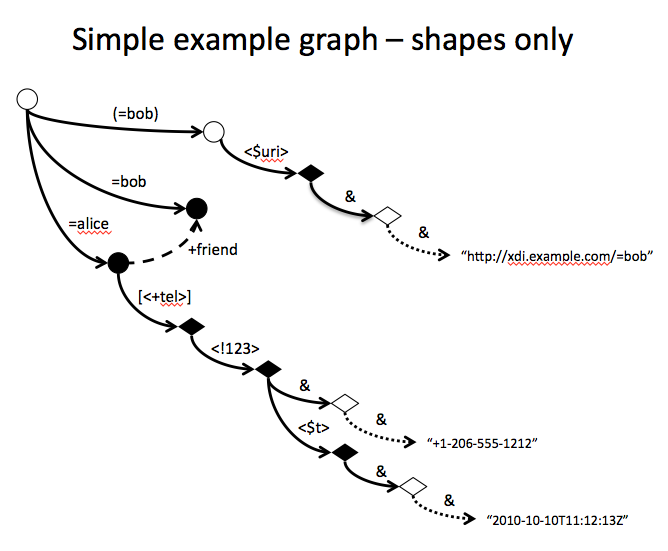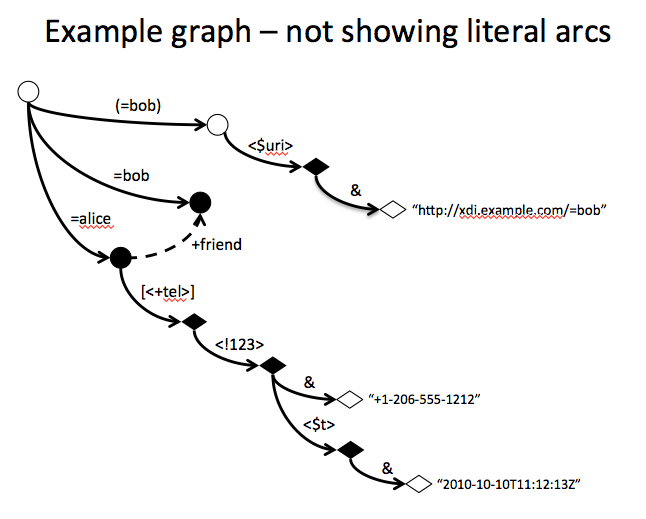On Wed, Sep 11, 2013 at 6:50 PM, Drummond Reed <drummond.reed@xdi.org> wrote:
Per the previous thread, I've created two more versions of a simple example graph reflecting Markus's and Joseph's suggestions.The first one eliminates the multiplicity characters in the shapes. I must agree with Markus, this makes the graph look much simpler visually. OTOH, I disagree with Markus that it's not worth using different shapes for entity nodes and attribute nodes. Especially in this simplified form (without the multiplicity characters inside the shapes), I think it is very valuable to be able to see in a glance which nodes are entities and which are attributes and which are values.The second example below is even simpler. It reflect Joseph's suggestion of removing the literal arcs and just putting the value (if there is one) next to the value node. I must admit, I really like this just because of how simple and intuitive it is. If a value node has a value, it is shown, otherwise no value is shown and it is undefined.I appreciate Markus's point about showing the three kinds of arcs in the XDI graph model, because I do think this is a very important part of the model. However in terms of teaching the XDI graph model, it seems to make it much simpler if we leave out the detail of needing a literal arc and & predicate every time you have a value. Rather, my suggestion is that we explain that once (and show it once) up front when we are introducing the notation, and then leave it out after that.

